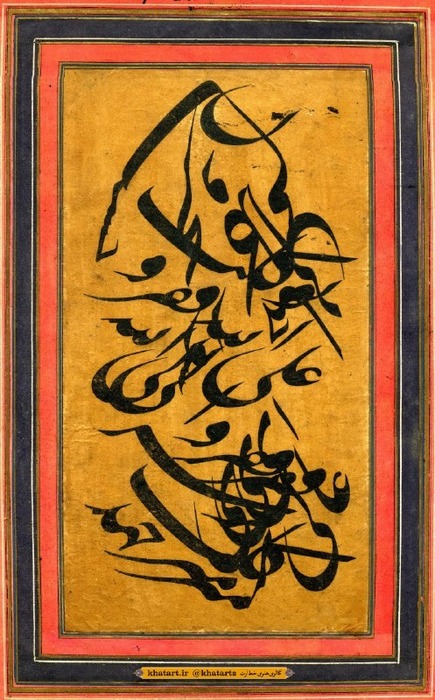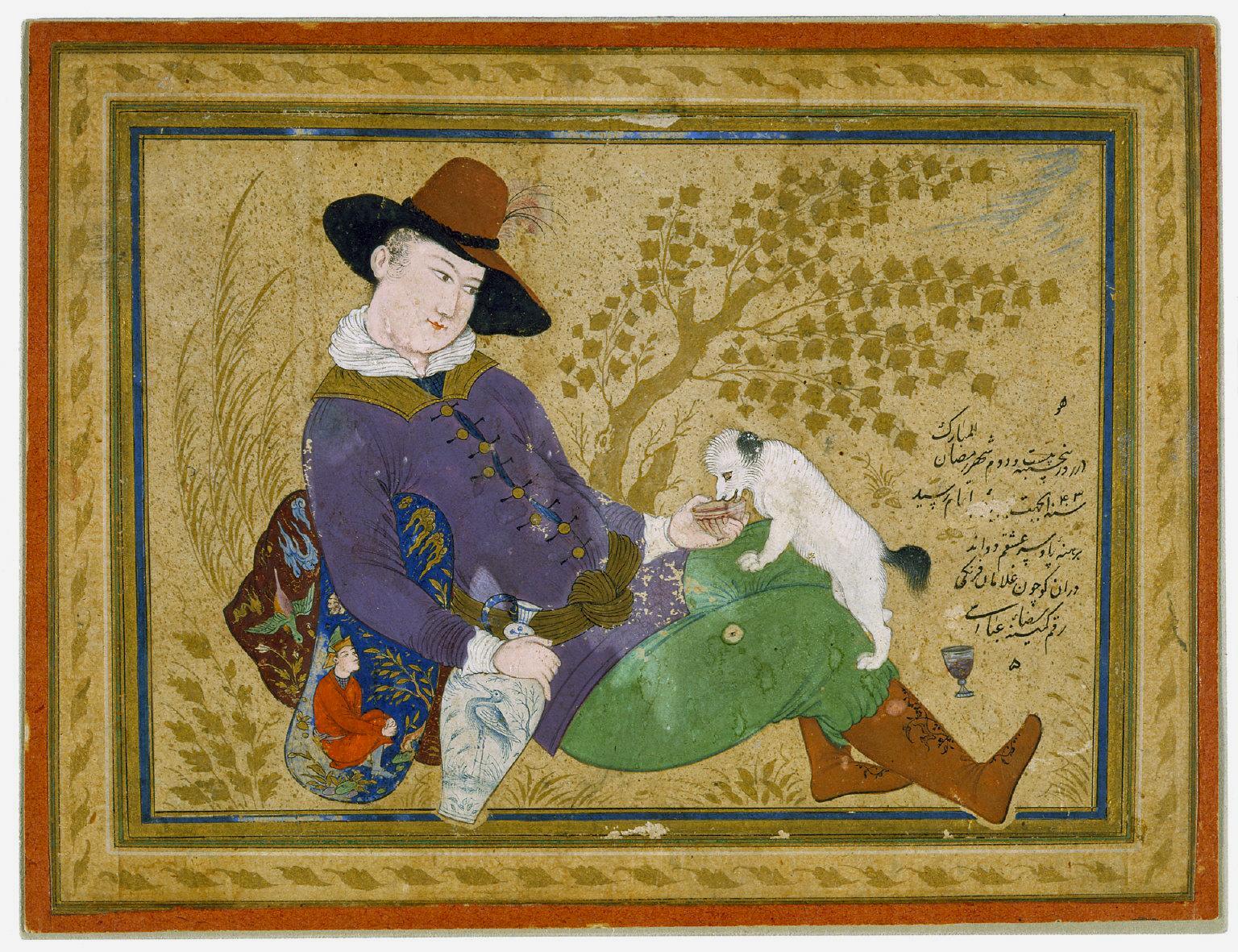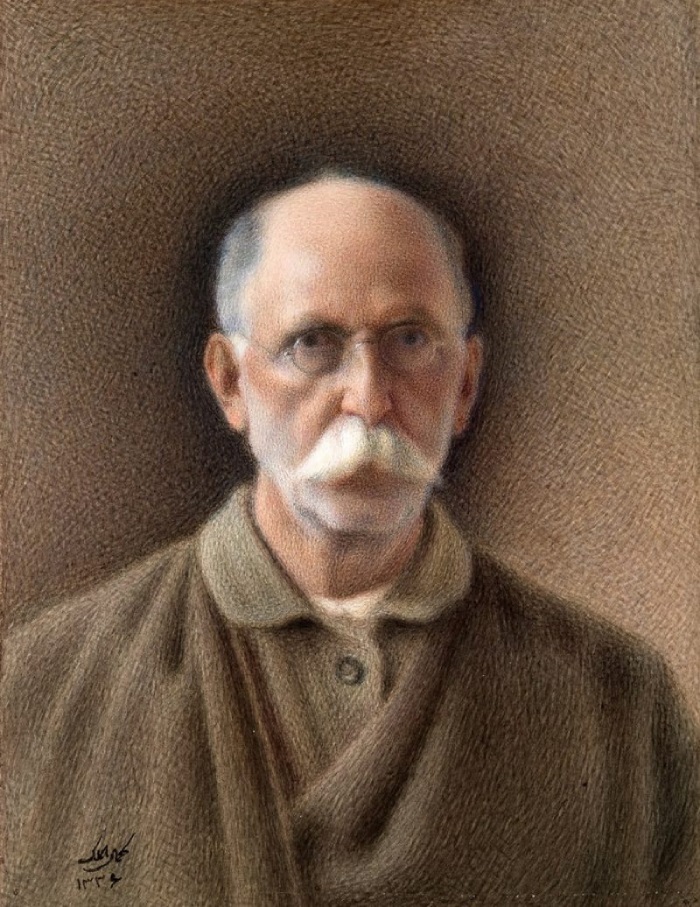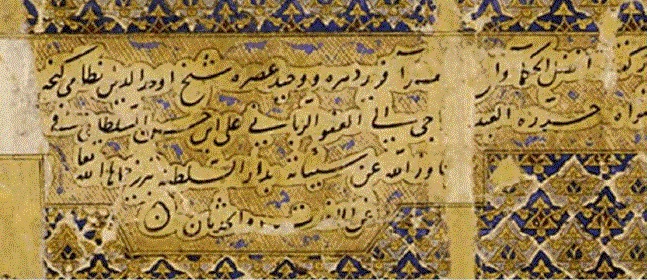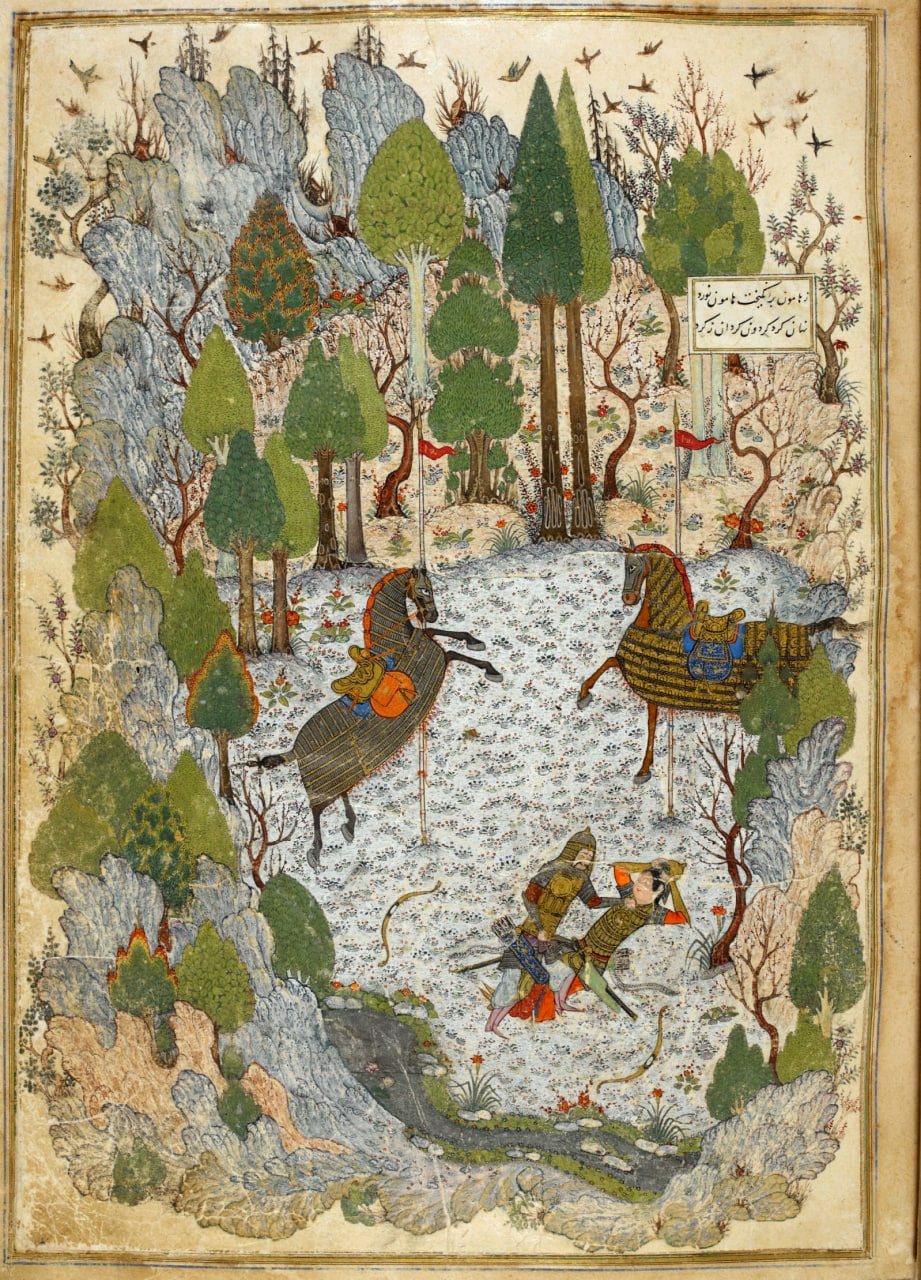
Persian Miniature Painting: An Art Inscribed on the UNESCO Intangible Cultural Heritage List
Persian Miniature Painting: An Art Inscribed on the UNESCO Intangible Cultural Heritage List
Persian miniature painting, considered one of the diverse forms of visual arts, is an authentic, beautiful, imaginative, delicate, subtle, and captivating art, consisting of finely detailed traditional, decorative, and functional illustrations.
Iranian painting maintains both an internal and external connection with mythological, epic, mystical, and lyrical texts. It often derives its themes from these sources. Consequently, the visual language of Persian miniatures is metaphorical and largely follows literary imagery and ornamentation. This art form has a close bond with calligraphy, and the most prominent examples of this connection can be seen in the manuscript copies of Ferdowsi’s Shahnameh, Saadi’s Bustan and Golestan, Nezami’s Khamsa, Hafez’s Divan, and Jami’s Haft Awrang.
Iranian painting maintains both an internal and external connection with mythological, epic, mystical, and lyrical texts. It often derives its themes from these sources. Consequently, the visual language of Persian miniatures is metaphorical and largely follows literary imagery and ornamentation. This art form has a close bond with calligraphy, and the most prominent examples of this connection can be seen in the manuscript copies of Ferdowsi’s Shahnameh, Saadi’s Bustan and Golestan, Nezami’s Khamsa, Hafez’s Divan, and Jami’s Haft Awrang.
Iranian miniature painting is rooted in a philosophical and mystical thought aligned with the Iranian spirit. Persian painters never aimed for pure realism; instead, using line, surface, and color, they represent their envisioned world. They do not merely attempt to mirror nature on a smaller scale; rather, they seek to convey both the outward appearance and the inner essence of nature through form, color, and space, leaving an imprint of their creative mind on it.
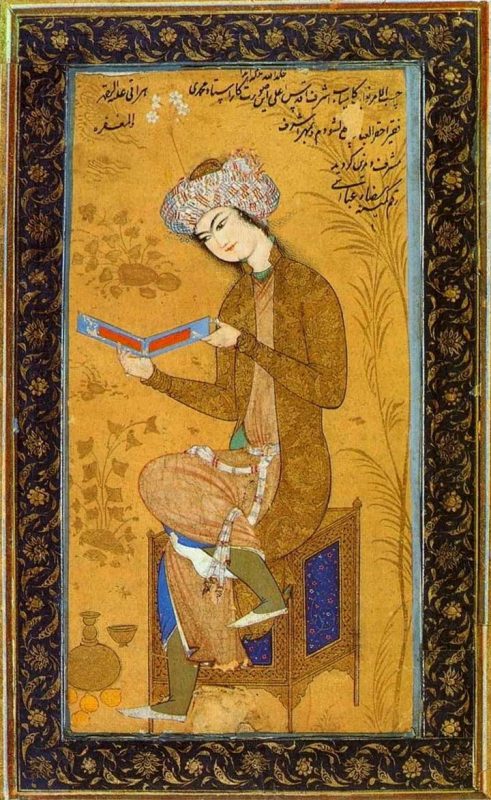
Saqi, by Reza Abbasi, 17th century AH
History of Iranian Miniature Painting
In recent years, archaeologists in the mountainous regions of Lorestan have discovered caves whose walls were painted by prehistoric humans. These findings reveal significant insights and show the ancient roots of later Iranian painting. For example, artifacts found at the Malyan hill in Fars were decorated with ochre, clay colors, and black pigments. The discovery of ancient cups, pottery, bronzes, and other artworks across the country demonstrates the continuity of Iranian painting. Additional findings from sites such as Sialk, Cheshmeh Ali, Ziwiyeh, Marlik, and other locations highlight the remarkable advancement of visual arts in ancient Iran.
However, what is meant by Iranian miniature painting refers specifically to the pictorial traditions that Iranian artists developed after the advent of Islam.
These traditions are rooted in the illustration and marginal decoration of religious books from the Sassanian period. This connection is evident when comparing the earliest Islamic images with the illustrated heritage of Mani.
These traditions are rooted in the illustration and marginal decoration of religious books from the Sassanian period. This connection is evident when comparing the earliest Islamic images with the illustrated heritage of Mani.
Like its Western counterpart, Iranian miniature painting began with illumination and manuscript illustration (book arts) and gradually gained independence from book decoration. This art, along with its various forms—painting, illumination (Tazhib), ornamentation (Tash’ir), and Gol-o-Morgh (flower and bird motifs)—can be summarized in several schools, named after the ruling dynasties or their capitals.
The origin of this classification, still widely used in historical studies of Iranian painting, can be traced back to the 1931 exhibition at Burlington House, England, where, for the first time, examples of ancient Iranian paintings were publicly displayed.
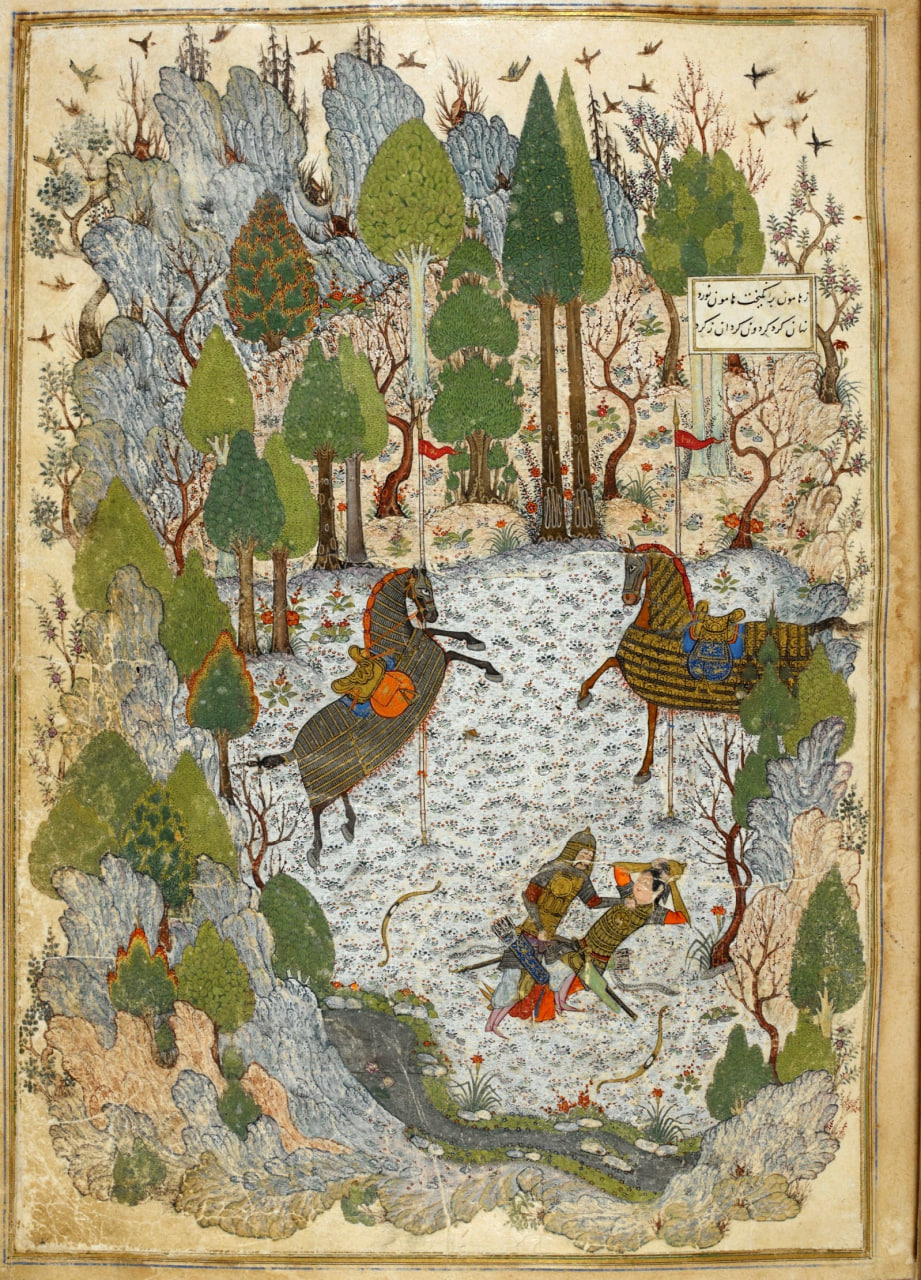
“The Battle of Homay and Homayoun”, by Janid Soltani, 8th century AH
Types of Iranian Miniature Painting
Iranian miniature painting encompasses arts, including traditional painting, tazhib (illumination), tash‘ir (ornamental detailing), and gol-o-morgh (flower-and-bird motifs). What these arts share are techniques in design, coloring, presentation, and procedural steps such as gilding, beadwork, clouding, and border drawing. Another fundamental feature of these different forms of Iranian miniature painting is their tendency to interrelate—sometimes all combined in a single artwork, while at other times each form is applied independently.
Below is a review of the main types:
A) Traditional Painting
This refers to the depiction and representation of real or imaginary subjects on surfaces such as paper, cardboard, and occasionally canvas or walls. Traditional painting in Iran has its roots in ancient painting traditions, historical miniature schools, muraqqa‘a (independent miniatures), and especially manuscript illustration. Iranian traditional painting also follows specific rules for subject selection, portraiture, composition, and other principles, which distinguish it from other conventional types of painting.
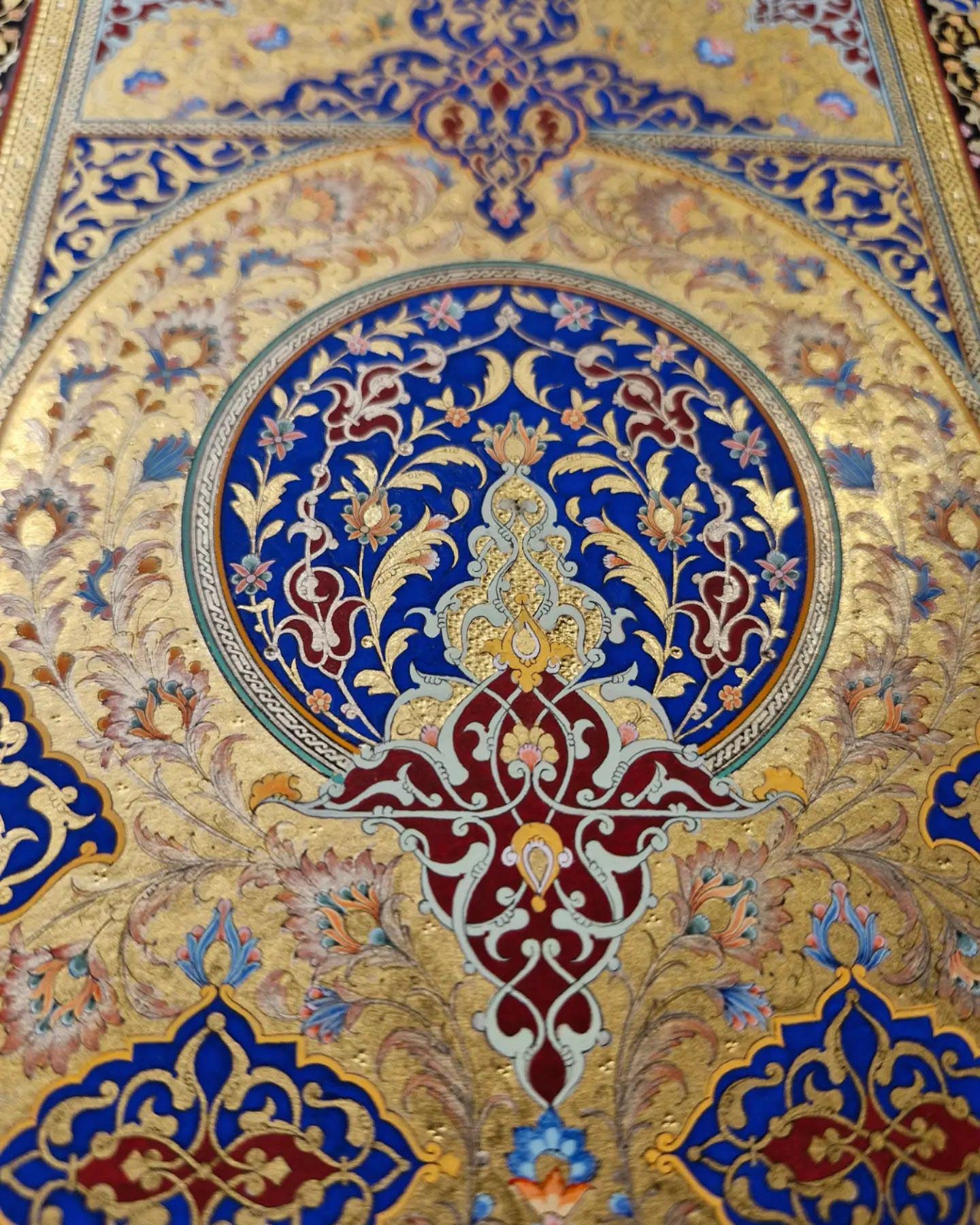
Miniature in Tazhib Style, by Mohsen Aghamiri
B) Tazhib (Illumination / Gilding)
Tazhib refers to the designing, fine brushwork, gilding, and coloring of delicate geometric and abstract motifs in the margins or text of manuscripts and calligraphic pieces. This type of illumination is considered a manifestation of unity in diversity, primarily built upon semi-circular linear forms and circular (Islimi) compositions.
Common elements and motifs in Tazhib include: Gilding (Gold application), Mohreh-keshi ( creating decorative dots or stamps), Jadval-keshi ( drawing ornamental borders or frames), Abrization (Cloud shading), Islimi (scrolling, vine-like motifs), Khatayi (stylized floral designs), Shamsa (sunburst motifs), Sharfeh (corner ornaments), Toranj (circular medallions), Lachaki / Lachak(Toranj – triangular or corner medallions), Boteh-jeqeh (paisley or teardrop-shaped motifs), Gereh (intricate knots), Sarloh / Neshan / Vagireh ( various header and emblem motifs)
Many of these motifs are not only used in manuscript illumination and miniature painting but also extend to other applied arts and handicrafts, demonstrating the integration of decorative design across Persian art.
C) Tash‘ir
Tash‘ir refers to single- or two-color decorative motifs used to adorn the borders of miniatures, manuscripts, and handcrafted book covers in traditional Persian art. The term derives from the word “sha‘r” (meaning hair), reflecting the fine, hair-like brushstrokes employed in this technique.
Tash‘ir is divided into two main types: botanical and animal motifs.
1. Botanical Tash‘ir – features abstracted forms of flowers, leaves, and shrubs.
2. Animal Tash‘ir – portraying real or mythical animals, such as dragons, lions, wolves, foxes, deer, gazelles, rabbits, Simurghs, leopards, and ostriches. Animal Tash‘ir is further categorized into:
o Nakhjiri (hunting scenes) – showing mounted hunters shooting arrows or pursuing prey.
o Gereft-o-gir (chase and struggle scenes) – portraying wild animals in pursuit, combat, or entanglement.
This technique highlights precision, elegance, and narrative within manuscript margins.
.jpg)
Zamen-e Ahoo (The Deer Guardian) – by Master Mahmoud Farshchian
D) Gol-o-Morgh (Flowers and Birds Painting)
This term refers to a type of traditional decorative painting in which the primary motifs are flowers and birds. Alongside Tazhib (illumination) and Tash‘ir (ornamental design), it is considered one of the practical applications of this longstanding traditional art. In miniature paintings and floral-and-bird pottery, flowers such as Mohammadi (Damask rose) and lilies are depicted alongside birds like nightingales, doves, and sparrows. This style of painting was mainly used to adorn chests, pen cases, mirror frames, and the covers of handwritten books, especially the Holy Quran.
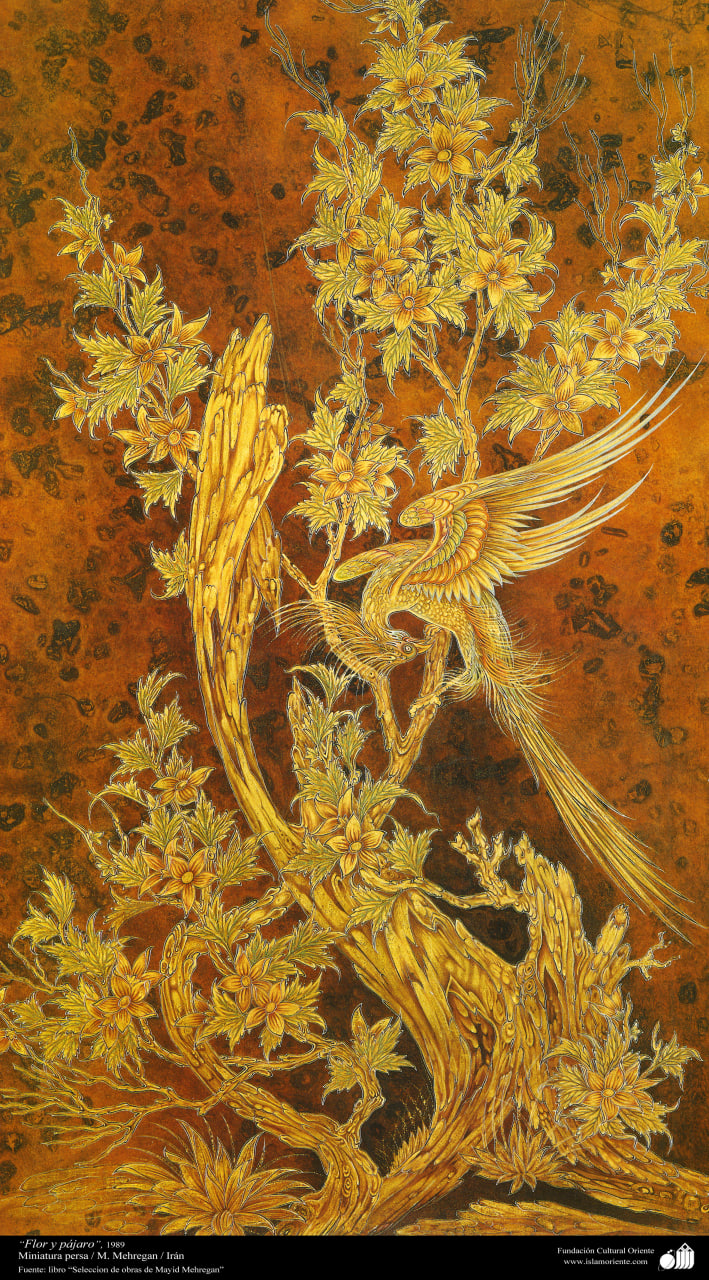
“Gol o Morgh” (Flowers and Birds), by Majid Mehregan, 1368 SH (1989–1990 CE)
Schools of Persian Miniature Painting
The classification of miniature painting schools in Iran is based on the political center of the ruling empire. In other words, artists from different regions would gather wherever the capital of the empire was located and engage in artistic activity. For instance, when the Timurid capital was in Herat, the Herat School emerged; when the capital moved to Tabriz, Qazvin, or Isfahan, the Tabriz, Qazvin, and Isfahan artschools were developed. This does not mean that miniature painting was absent in other cities, but the concentration of artists in one place influenced their style and techniques, shaping the characteristics of each school.
The most important schools of Persian miniature painting are: Abbasid (Baghdad), Seljuk, Ilkhanid (Tabriz), Shiraz, Jalayirid (Tabriz–Baghdad), Herat, Safavid, and Isfahan. Below is a summary of each:
a) Abbasid School
In the 2nd century AH, in the Abbasid capital, Baghdad, the Abbasid School emerged. Surviving artworks reflect influences from Byzantine art (Eastern Roman) and Iranian (Sassanid) traditions. Miniature painting in this school focused on book illumination, religious texts, and recreating non-Arabic imagery. Iranian artists played a significant role, laying the foundation for an independent Persian miniature tradition. Faces often display facial characteristics with long noses and black beards, and figures are depicted lively and energetic.
In the 2nd century AH, in the Abbasid capital, Baghdad, the Abbasid School emerged. Surviving artworks reflect influences from Byzantine art (Eastern Roman) and Iranian (Sassanid) traditions. Miniature painting in this school focused on book illumination, religious texts, and recreating non-Arabic imagery. Iranian artists played a significant role, laying the foundation for an independent Persian miniature tradition. Faces often display facial characteristics with long noses and black beards, and figures are depicted lively and energetic.
b) Seljuk School
Considered the first true Persian miniature school (4th century AH), it overlaps chronologically with Baghdad’s school. Influences from Abbasid art persist, alongside new elements from Sassanian and Chinese art. Notable examples include illustrations in Varqeh va Golshah and Samak-e ‘Ayyar. Figures feature almond-shaped eyes, halos, and floral or arabesque backgrounds, with clear and defined lines.
Considered the first true Persian miniature school (4th century AH), it overlaps chronologically with Baghdad’s school. Influences from Abbasid art persist, alongside new elements from Sassanian and Chinese art. Notable examples include illustrations in Varqeh va Golshah and Samak-e ‘Ayyar. Figures feature almond-shaped eyes, halos, and floral or arabesque backgrounds, with clear and defined lines.
c) Ilkhanid School
After the fall of the Mongol Ilkhanate in Iran, this school emerged in Tabriz. Mongol rule fostered cultural exchange with China, introducing Chinese painting influences: broader color palettes, landscape depiction, detailed hatching, and elements such as dragons, mountains, clouds, rocks, and intricate flowers. Byzantine influences remain faintly visible.
After the fall of the Mongol Ilkhanate in Iran, this school emerged in Tabriz. Mongol rule fostered cultural exchange with China, introducing Chinese painting influences: broader color palettes, landscape depiction, detailed hatching, and elements such as dragons, mountains, clouds, rocks, and intricate flowers. Byzantine influences remain faintly visible.
d) Shiraz School
Emerging in Shiraz during Mongol Ilkhanid rule, this school avoided direct Chinese influence. Its characteristics include elevated horizon lines, flowered grounds, thin human figures with large heads, side-facing bearded faces, free-flowing lines, simple warm-toned color shading, and a continuation of Seljuk stylistic elements.
Emerging in Shiraz during Mongol Ilkhanid rule, this school avoided direct Chinese influence. Its characteristics include elevated horizon lines, flowered grounds, thin human figures with large heads, side-facing bearded faces, free-flowing lines, simple warm-toned color shading, and a continuation of Seljuk stylistic elements.
e) Jalayirid School
Following the collapse of the Ilkhanate, the Jalayirid School arose in Tabriz and Baghdad. Chinese and Byzantine elements gradually disappear, and painting leans toward a more poetic, imaginary, and idealized Persian aesthetic. Features include a broad color range, decorative doors and walls, rhythmic geometric compositions, floral landscapes, independence from textual illustration, and elongated figures with round faces.
Following the collapse of the Ilkhanate, the Jalayirid School arose in Tabriz and Baghdad. Chinese and Byzantine elements gradually disappear, and painting leans toward a more poetic, imaginary, and idealized Persian aesthetic. Features include a broad color range, decorative doors and walls, rhythmic geometric compositions, floral landscapes, independence from textual illustration, and elongated figures with round faces.
f) Herat School
Founded under Shahrukh (son of Timur) and reaching its peak under Sultan Husayn Bayqara, this school eliminated Chinese elements entirely and established a fully Persian style based on Shiraz achievements. Characteristics include richer colors, more complete circular compositions, greater attention to human presence, more dynamic figures, elaborate decorations, everyday subjects, and the emergence of single-page paintings (Ruqʿah) independent of manuscripts.
Founded under Shahrukh (son of Timur) and reaching its peak under Sultan Husayn Bayqara, this school eliminated Chinese elements entirely and established a fully Persian style based on Shiraz achievements. Characteristics include richer colors, more complete circular compositions, greater attention to human presence, more dynamic figures, elaborate decorations, everyday subjects, and the emergence of single-page paintings (Ruqʿah) independent of manuscripts.
g) Safavid School
Continuing the Herat School’s legacy, spearheaded by Kamal-ud-Din Behzad and his pupils, it emphasizes complementary and bright colors, densely populated and dramatic human depictions, a combination of architecture with figures, spiral and circular compositions, and period-accurate clothing design.
Continuing the Herat School’s legacy, spearheaded by Kamal-ud-Din Behzad and his pupils, it emphasizes complementary and bright colors, densely populated and dramatic human depictions, a combination of architecture with figures, spiral and circular compositions, and period-accurate clothing design.
h) Isfahan School
The Isfahan school, developed during Shah Abbas I’s reign, marked the independence of miniatures from manuscripts. Notable changes included the introduction of single-figure portraits, greater emphasis on design, reduced use of decorative colors, detachment of human figures from their environment, and a shift toward realistic depictions of faces and forms. Additionally, wall paintings emerged with a quality comparable to that of paper miniatures.
The Isfahan school, developed during Shah Abbas I’s reign, marked the independence of miniatures from manuscripts. Notable changes included the introduction of single-figure portraits, greater emphasis on design, reduced use of decorative colors, detachment of human figures from their environment, and a shift toward realistic depictions of faces and forms. Additionally, wall paintings emerged with a quality comparable to that of paper miniatures.
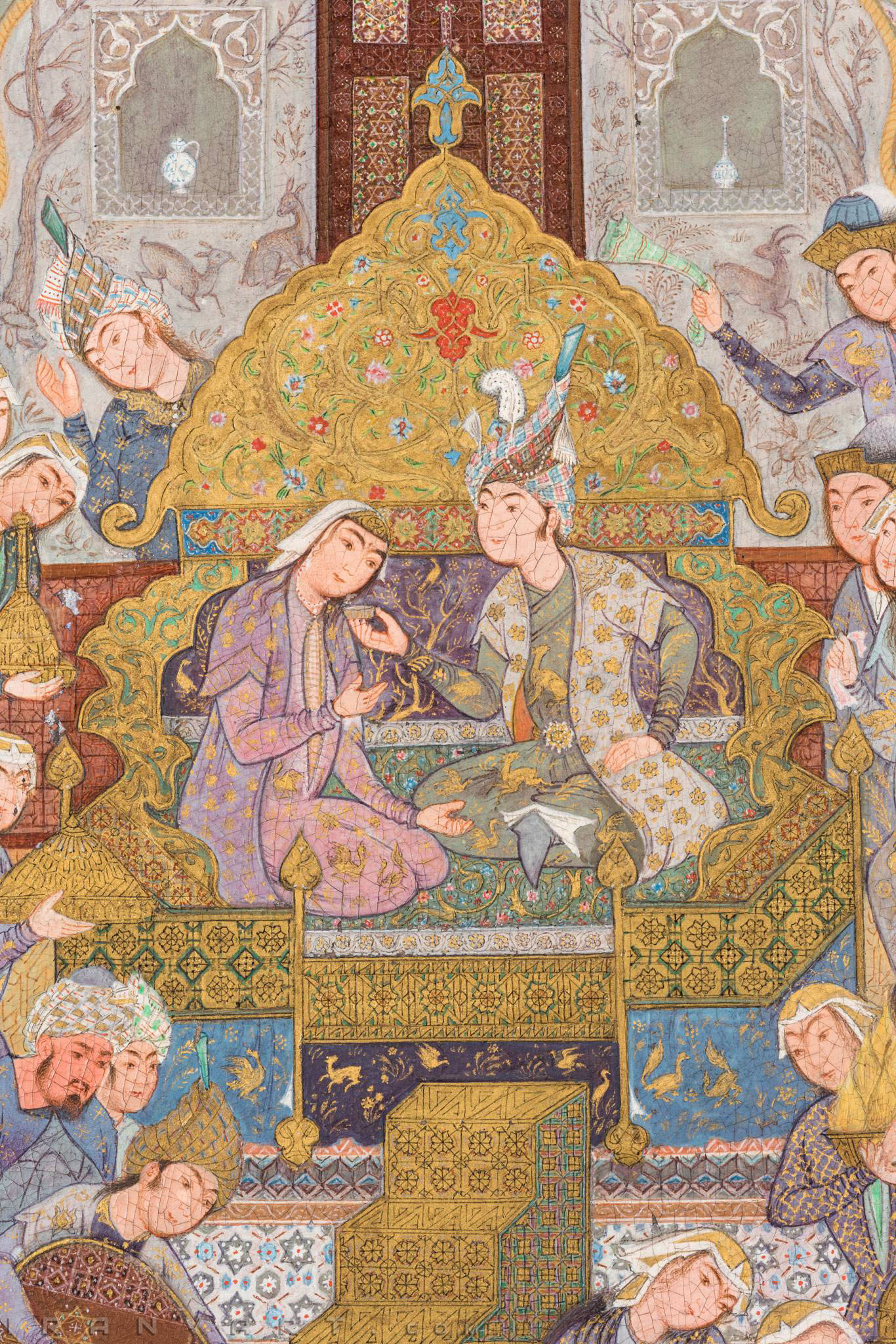
Miniature “Gonbad-e Bahram” by Hadi Tajvidi
Miniature Painting after the Isfahan School
Iranian miniature painting, transitioning from the Safavid school and in response to cultural developments and changing public tastes, embarked on a new path. In this new course, the distinctive traditions of miniature painting were gradually set aside, and a Western naturalistic style slowly took their place. During this long period, which lasted until the late Qajar era, Miniature painting gradually influenced other painting styles or was applied functionally. For example, in illumination, decorative motifs, pen-case painting (qalamdan), bookbinding and mirror frames,etc. At the beginning of the Pahlavi era, renewed efforts emerged to revive miniature painting and return to its unique traditions. This revival, which took on a somewhat academic form, aimed to adapt miniature painting to contemporary tastes. Changes included portraying more Iranian-looking faces, applying perspective, using shaded coloring techniques, rendering more precise details, and employing larger backgrounds—all while preserving the traditional essence of the art. The effects of this transformation remain visible in Iranian miniatures today.
Islamic Revolution Miniature Painting
The advent of the Islamic Revolution opened a new chapter in the art of Iranian miniature painting. From the very beginning of the revolution, miniature artists, while aligning with its objectives and values, created significant and noteworthy works of art. Among them, Master Mahmoud Farshchian, who had perfected his artistic skills, was able to create works that reflected the language and spirit of the revolutionary Iranian people, employing a style informed by his deep knowledge, experience, and mastery of miniature painting.

Painting: “In Hope of Jerusalem’s Freedom” by Mina Sadri
Some of their students, although producing fewer works compared to the painters themselves, inspired hope for developing a new visual language suited to the conditions of the Islamic Revolution. One of the key commitments of painters during the Revolution was to protest the crimes of oppressors and the injustices inflicted upon the oppressed worldwide. Additionally, portraying the spirit of struggle, resistance, self-sacrifice, and martyrdom was another prevalent theme in the works of Iranian painters of the revolutionary era.
In 2020 (1399 in the Iranian calendar), Iranian miniature painting, under a joint dossier with Turkey, Azerbaijan, and Uzbekistan, was inscribed on the UNESCO Representative List of the Intangible Cultural Heritage of Humanity, becoming Iran’s fifteenth intangible heritage recognized by UNESCO.
| Name | Persian Miniature Painting: An Art Inscribed on the UNESCO Intangible Cultural Heritage List |
| Country | Iran |
| Celebrities | |
| awards | International |
Choose blindless
Red blindless Green blindless Blue blindless Red hard to see Green hard to see Blue hard to see Monochrome Special MonochromeFont size change:
Change word spacing:
Change line height:
Change mouse type:
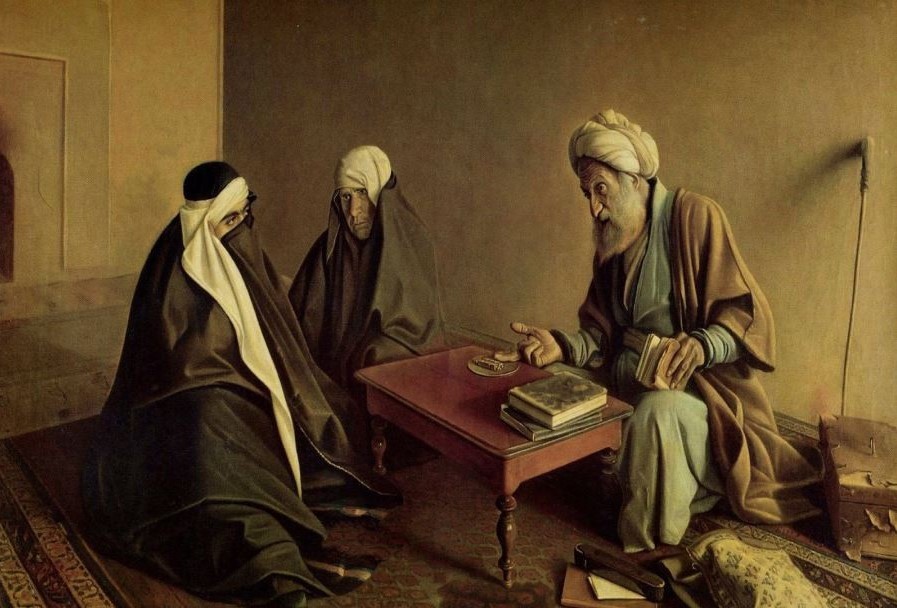
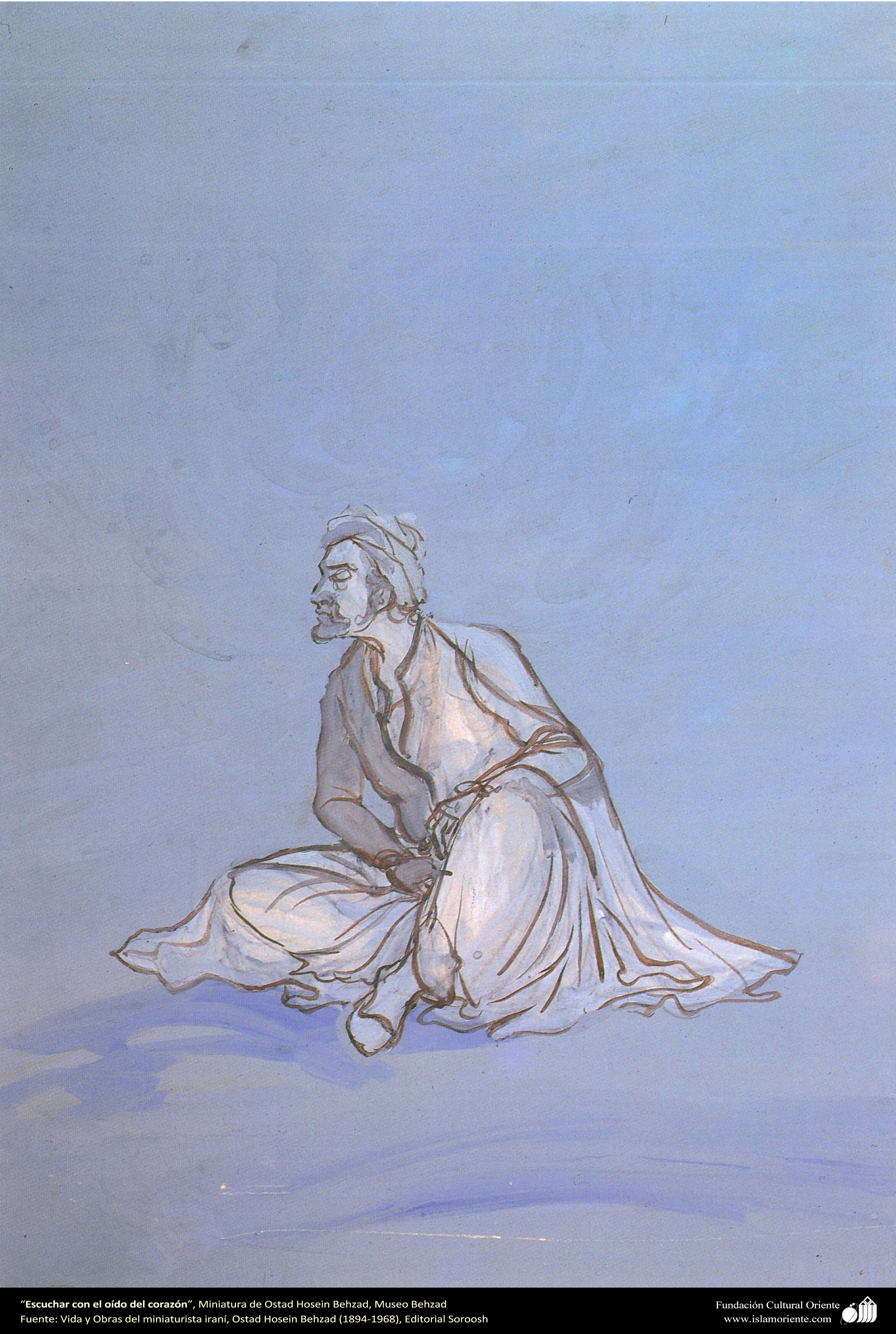
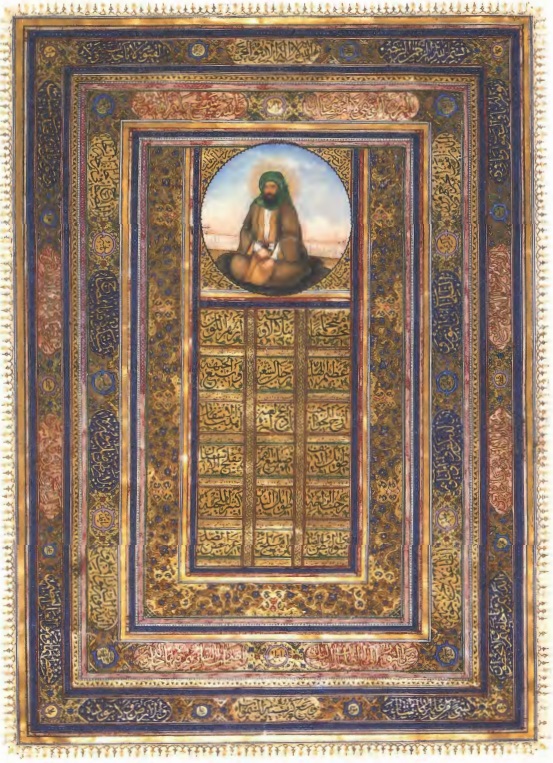

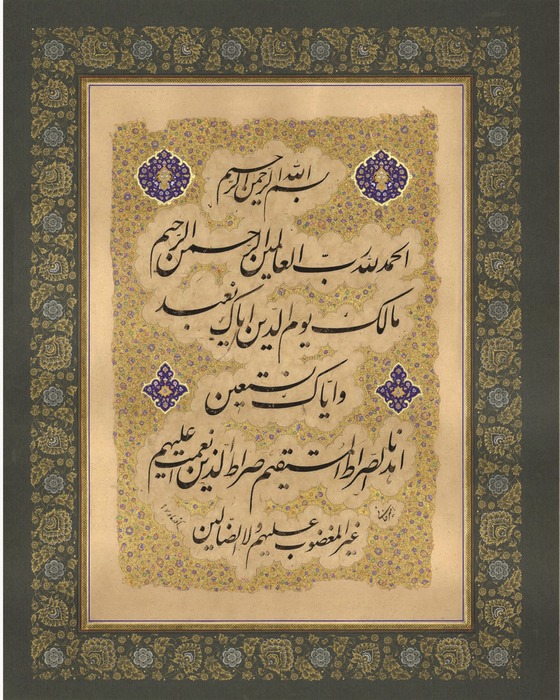
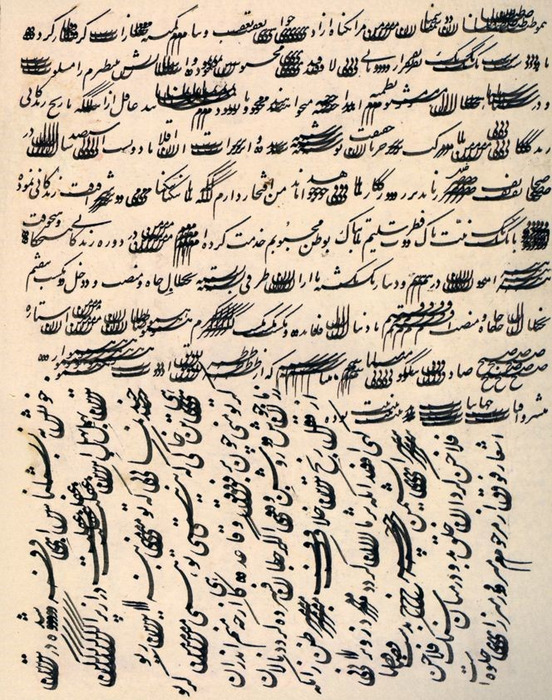
.jpg)
(7)_1_1.jpg)
